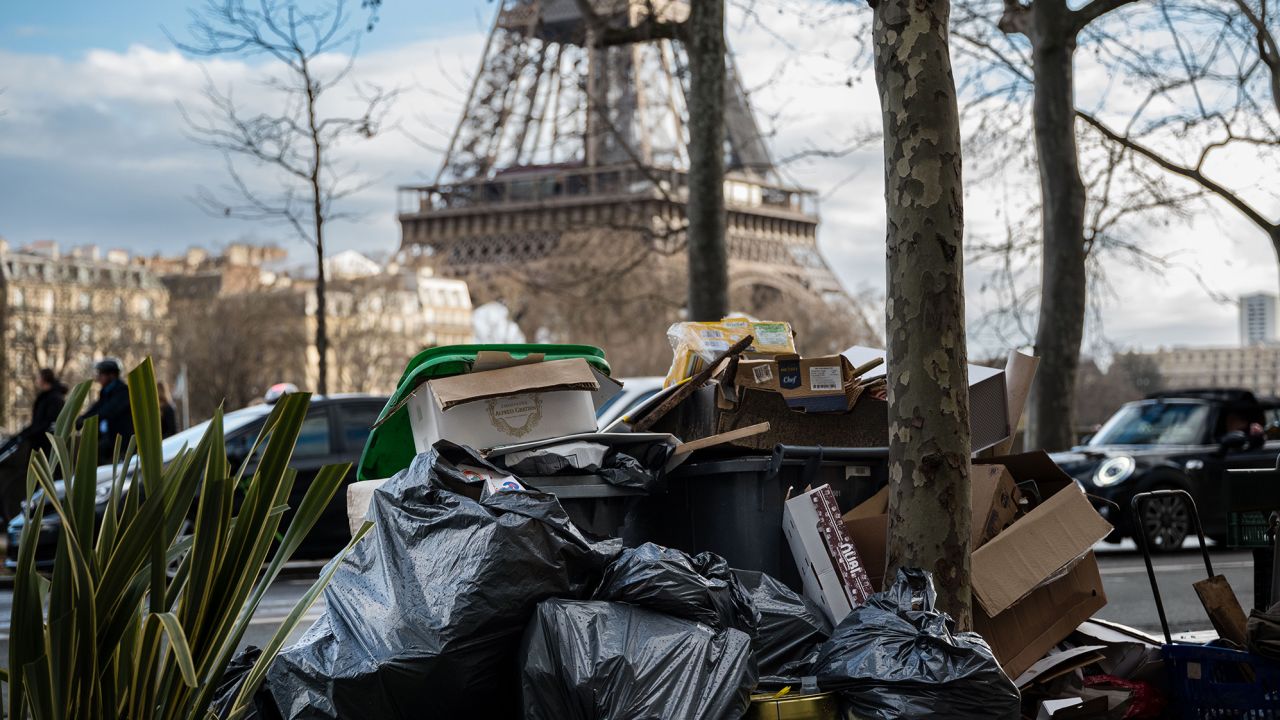Editor’s Note: David A. Andelman, a contributor to CNN, twice winner of the Deadline Club Award, is a chevalier of the French Legion of Honor, author of “A Red Line in the Sand: Diplomacy, Strategy, and the History of Wars That Might Still Happen” and blogs at Andelman Unleashed. He formerly was a foreign correspondent for The New York Times and CBS News. The views expressed in this commentary are his own. View more opinion at CNN.
When the president of France loses their party’s majority in parliament, the resulting political stalemate has long been known as “cohabitation” – a state of affairs to be avoided at all costs.

So it was with perhaps a sense of irony that the mayor of Paris is now forming a committee to look into the “cohabitation” of her citizens with the city’s notorious population of… rats. The four-legged variety.
The study will explore to what extent humans and rats can live together in a way that is “the most efficient” and at the same time “not unbearable for Parisians.”
Rats? In the city of light and love? The world’s capital of fashion, style and, of course, cuisine? Well, yes. And it’s not the only major world metropolis keeping its rodent residents in unshakably rude health.
It’s a problem Paris shares with America’s largest city – New York. And, with homes in both places, I can attest first-hand to the reality. Rats aren’t fun.
That was especially true during the tsunami of garbage that piled up on the French capital’s streets in the spring – at one point surging to 10,000 tons.
The city’s trash collectors threw down their shovels and brooms for weeks – like millions of their fellow Frenchmen and women in other essential industries – in protest against the rise in the national retirement age from 62 to 64.
It was a bonanza for the city’s estimated 6 million rats – almost three for every resident.
And barely a year before the Paris Olympics kick off – including an estimated 13.5 million visitors from around the world – the city’s rats will soon be on full display as perhaps never before.
At the open-air market on the Boulevard Raspail on Tuesday, Tony, the “King of Chickens,” told me that in a rival market near the Place de la Bastille, the rats are – and he put up both hands to demonstrate – as big as cats. Not at Raspail, though. It’s a very clean market, he assured me.
Perhaps. But really, they seem to be just about everywhere now. At times they even run in packs. Especially along the Seine, barely a block from my apartment, where between the Musée d’Orsay and the Pont Royal they’ve been caught on video – by a trash collector, no less – swarming.
The same goes for New York. Indeed, if there’s one attribute shared by New York and Paris it’s rats. In New York, I’ve spotted them disporting themselves on the tracks in the subway, all but immune to the trains as they come roaring into the stations. In Paris, they skitter across the paths in the picturesque Tuileries Gardens.
But not all Parisians are as inclined as Mayor Anne Hidalgo to offer a fig leaf to their rodent cohabitors. As Geoffroy Boulard, vocal mayor of Paris’s 17 arrondissement (each of Paris’s 20 quartiers also has its own elected, hyperlocal mayor) put it, “we want a program of de-raticization, not cohabitation.”
In a pinned Tweet, Boulard minces no words, expounding on his desire for an all-out war on rats, as images play in the background of dozens gorging themselves in Paris’s elegant gardens.

Not surprisingly, there are some who believe ridding the city of rats with traps and rat poison is utterly inhumane. PAZ (Paris Animals Zoopolis), which is also battling the “enslavement of animals in circuses,” has also adopted rats – and their humane treatment – as a cause.
During the garbage strike, one PAZ member and city councilor, Douchka Marcovitch, even argued that “rats eat several tons of waste per day. They are assets rather than liabilities” in keeping Paris clean.
In contrast, Boulard with his anti-rat vengeance, sounds more like the mayor of New York than the mayor of Paris. Indeed Mayor Eric Adams has no interest in cohabiting with rats fullstop. Hardly surprising, considering how adept they at getting inside New York apartments.
Horror stories abound. In a basement apartment in Manhattan, Ben Regenspan, 37, recounted to the New York Times how he once saw a rat emerge from his toilet with a splashing sound while he was brushing his teeth.
“I screamed, flushed, he swam back down,” he said. “I poured in a bunch of cleaning products and flushed again.” The rat was gone, but not his trauma. He did his best never to sit down again on that toilet, using the one at his office instead.
Get Our Free Weekly Newsletter
- Sign up for CNN Opinion’s newsletter.
- Join us on Twitter and Facebook
Mayor Adams, after a nationwide search, now has a “director of rodent management,” dubbed New York’s “rat czar.” It’s a far cry from Mayor Hidalgo’s “deputy mayor for public health,” who decided in lieu of extermination to form a committee on cohabitation. (A not atypical activity when a problem seeks a solution in France).
Some priorities under consideration in Paris: hermetically sealed garbage cans, even rat contraceptives. Hardly all-out war.
Sadly, as with most of Hidalgo’s plans – from dealing with traffic to graffiti – there’s a whole lot less than meets the eye. One reason, perhaps, that she came in 10th in last year’s French presidential election with just 1.75% of the vote.
Of course, Paris has a far longer history than New York with rats. In the 14th century, rats arriving by cargo ships brought with them the bubonic plague, a disease that killed a third of the city’s population.
The blight, if not the disease, continues today. And the city still hasn’t figured a way to get rid of them. (That said, the plague still exists in parts of the world, though these days we have antibiotics to treat it.)
As the French love to say: “The more things change, the more they remain the same.”

